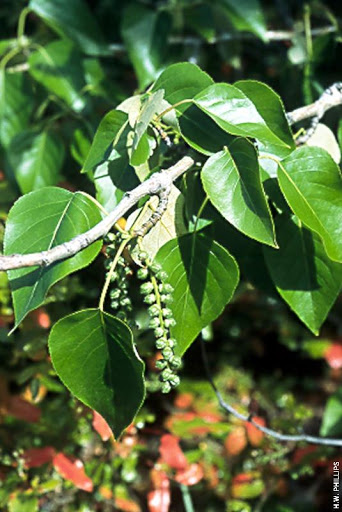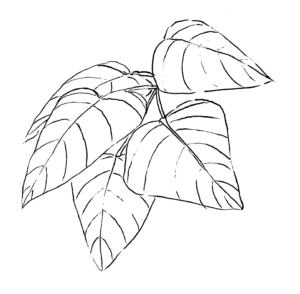 Black Cottonwood, Populus trichocarpa
Black Cottonwood, Populus trichocarpa
Salicaceae – Willow family
It is the seed (“carpa” meaning “fruit”) that is cotton-like (“tricho” meaning “hairy”), not the wood, that is the basis for the common and specific names. The generic name is Latin meaning “people” for poplars (Populus spp.) and was commonly planted in Roman cities.
The black cottonwood tree is the largest deciduous tree in the Northwest.
Young bark is light gray and smooth contrasting sharply with the darkened fissures of older bark. The leaf buds are large, pointed and exude a sticky sweet-scented resin. The leaves are triangular, dark glossy green above and whitish beneath. Remember the cottonwood when warm summer breezes are filled with cottony fluff carrying tiny seeds produced by the female trees.
Native groups used the wood for posts, the bark for roofing and young shoots for lashing and tying. The infusion of bark found use as a gargle for sore throat, the bruised leaves as an antiseptic for cuts, the buds to prepare an eyewash, and the resin from direct application on cuts and wounds. The Native medicinal uses parallel European uses of black poplar (Populus nigra), and are very likely based on the anti-inflammatory and antiseptic properties of tannins, resins, essential oils, and the glycosides salicin and populin.

Information courtesy of “The View From Springbrook Park; an Illustrated Natural History”
by Ed Chinn.
Illustration by Michelle Tanz
Sponsored by Friends of Springbrook Park; Lake Oswego, OR